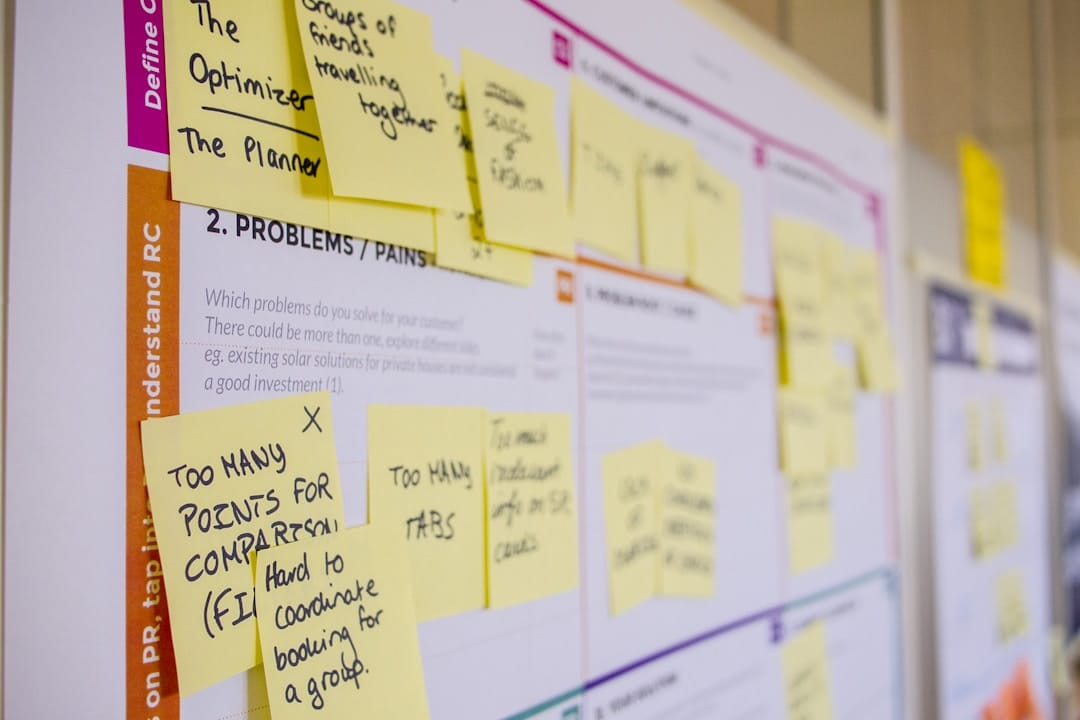Discover how Virtual Project Management Offices (VPMOs) transform business operations. Learn their key roles, benefits like enhanced collaboration and cost reduction, and best practices for implementation. As remote work evolves, VPMOs optimize project management and offer a competitive edge.
In today's fast-paced digital landscape, businesses constantly seek innovative ways to streamline operations and maximise productivity. Enter the Virtual Project Management Office (VPMO) – a game-changing solution that's transforming how organisations manage projects and drive success. This comprehensive guide will explore the purpose, benefits, implementation strategies, and best practices of VPMOs, helping you make informed decisions for your business.
What is a Virtual Project Management Office?
A Virtual Project Management Office, or VPMO, is a centralised, cloud-based hub that oversees and coordinates an organisation's projects, programs, and portfolios. Unlike traditional PMOs, VPMOs leverage digital tools and remote work capabilities to provide flexible, scalable project management solutions across geographical boundaries.
Critical components of a VPMO:
- Cloud-based project management software
- Collaboration tools for remote teams
- Virtual meeting platforms
- Document sharing and version control systems
- Resource allocation and tracking tools

What is the Purpose of a Virtual Project Management Office?
The primary purpose of a Virtual Project Management Office is to provide a centralised, digital framework for managing projects efficiently and effectively across distributed teams. Specifically, a VPMO serves to:
- Streamline Project Management: By centralising project data and processes, VPMOs create a single source of truth for all project-related information.
- Enhance Collaboration: VPMOs facilitate seamless communication and collaboration among team members, regardless of their physical location.
- Improve Resource Allocation: VPMOs use digital tools to enable more efficient resource allocation and management across various projects.
- Standardise Processes: VPMOs help establish and maintain consistent project management methodologies and best practices across the organisation.
- Provide Real-Time Visibility: With cloud-based tools, VPMOs offer stakeholders real-time insights into project progress, challenges, and outcomes.
- Drive Digital Transformation: By embracing virtual tools and processes, VPMOs support and accelerate an organisation's digital transformation efforts.
- Increase Flexibility and Scalability: VPMOs allow organisations to quickly scale their project management capabilities up or down based on demand.
- Reduce Operational Costs: By eliminating the need for physical office space and reducing travel, VPMOs can significantly cut project management-related expenses.
What is the Role and Responsibilities of a Virtual PMO?
A Virtual Project Management Office plays a crucial role in ensuring project success and organisational efficiency. The key responsibilities of a VPMO include:
- Strategic Alignment: Ensuring all projects align with the organisation's strategic goals and objectives.
- Project Portfolio Management: Overseeing the entire portfolio of projects, prioritising initiatives, and allocating resources effectively.
- Methodology Development and Implementation: Establishing, maintaining, and evolving project management methodologies and best practices.
- Training and Support: Providing training and ongoing support to project managers and team members on tools, processes, and methodologies.
- Performance Monitoring and Reporting: Tracking project performance, generating reports, and providing insights to stakeholders.
- Risk Management: Identifying potential risks across projects and developing mitigation strategies.
- Quality Assurance: Ensuring that projects meet quality standards and deliver expected outcomes.
- Tool Selection and Management: Selecting, implementing, and managing the digital tools and platforms used for project management.
- Knowledge Management: Facilitating the capture, storage, and sharing of project-related knowledge and lessons learned.
- Continuous Improvement: Regularly assessing the effectiveness of project management processes and implementing improvements.
Why Do We Need Virtual Project Management Offices?
The need for VPMOs has become increasingly apparent in recent years, driven by several key factors:
- Remote Work Revolution: The COVID-19 pandemic accelerated the shift towards remote work, necessitating project management solutions that can effectively coordinate distributed teams.
- Digital Transformation: As businesses undergo digital transformation, VPMOs provide the digital infrastructure needed to align project management with new digital strategies.
- Cost Efficiency: In a competitive business environment, VPMOs offer significant cost savings by reducing expenses related to physical office space, travel, and hardware.
- Global Talent Access: VPMOs enable organisations to tap into a global talent pool, gaining access to specialised skills that might not be available locally.
- Scalability and Flexibility: Rapidly changing market conditions demand project management solutions that can quickly scale up or down. VPMOs offer this crucial flexibility.
- Enhanced Collaboration: With teams often spread across different time zones, VPMOs provide the tools and processes for effective collaboration, which is vital for project success.
- Data-Driven Decision Making: VPMOs typically have advanced analytics capabilities, which allow for more informed, data-driven project decisions.
- Process Standardisation: For organisations managing multiple projects, VPMOs help standardise processes across the board, leading to improved efficiency and consistency.
- Competitive Advantage: As more businesses adopt VPMOs, those who don't risk falling behind in terms of efficiency and adaptability.
- Environmental Considerations: By reducing the need for physical office space and travel, VPMOs can help organisations reduce their carbon footprint, aligning with growing ecological concerns.
The Rise of Virtual Project Management
The shift towards remote work and digital transformation has accelerated the adoption of VPMOs. Recent studies and industry reports indicate a clear trend: most organisations have implemented some form of virtual project management, with many reporting improved project outcomes as a result.
This widespread adoption is driven by several factors:
- The global pandemic's impact on work arrangements necessitates remote collaboration tools and practices.
- Increased recognition of the benefits of digital project management tools in enhancing efficiency and transparency.
- There is a need for greater flexibility and scalability in project management to respond to rapidly changing business environments.
- Growing emphasis on cost-effectiveness and resource optimisation in project delivery.
- The expanding global talent pool requires virtual collaboration capabilities to leverage effectively.
These trends suggest that virtual project management, and by extension, Virtual Project Management Offices, are becoming increasingly integral to modern business operations. Organisations that embrace these practices are positioning themselves to be more agile, efficient, and competitive in the digital age.
Benefits of Implementing a VPMO
- Cost Reduction: By eliminating the need for physical office space and reducing travel expenses, VPMOs can significantly cut operational costs.
- Enhanced Flexibility: VPMOs allow seamless scaling of project management resources based on demand, ensuring optimal resource utilisation.
- Improved Collaboration: Virtual platforms facilitate real-time communication and collaboration among team members, regardless of their location.
- Increased Productivity: With 24/7 access to project data and tools, teams can work more efficiently and effectively.
- Better Risk Management: Centralised data and reporting enable proactive identification and mitigation of project risks.
- Global Talent Pool: VPMOs allow organisations to tap into a worldwide talent pool, accessing specialised skills as needed.
Implementing a Virtual Project Management Office
Successfully transitioning to a VPMO requires careful planning and execution. Here's a step-by-step guide to help you get started:
1. Assess Your Organisation's Needs
Before implementing a VPMO, thoroughly analyse your current project management processes, pain points, and goals. This assessment will help you identify the specific areas where a VPMO can add value to your organisation.
2. Choose the Right Technology Stack
Selecting the appropriate tools is crucial for VPMO's success. Consider factors such as:
- Scalability
- Integration capabilities
- User-friendliness
- Security features
- Reporting and analytics functionalities
Popular VPMO software options include Microsoft Project Online, Atlassian Jira, and Asana.
3. Develop Virtual Project Management Processes
Create standardised processes and workflows that align with your organisation's goals and project management methodologies. These may include:
- Project initiation and approval procedures
- Resource allocation and management
- Risk assessment and mitigation strategies
- Progress tracking and reporting protocols
- Change management processes
4. Train Your Team
Invest in comprehensive training programs to ensure your team members are proficient in using the new VPMO tools and following established processes. This may include:
- Virtual onboarding sessions
- Online training modules
- Regular skill-building workshops
- Mentoring programs
5. Foster a Virtual Project Management Culture
Promote the VPMO's benefits and showcase early successes to encourage adoption. Create a culture that values collaboration, transparency, and continuous improvement.
Best Practices for Virtual Project Management Office Success
To maximise the benefits of your VPMO, consider implementing these best practices:
- Establish Clear Communication Channels: Define preferred communication methods and set expectations for response times to ensure smooth collaboration.
- Implement Strong Security Measures: Protect sensitive project data with robust cybersecurity protocols, including multi-factor authentication and encryption.
- Leverage Data Analytics: Use the wealth of data generated by your VPMO to gain insights, optimise processes, and make data-driven decisions.
- Regularly Review and Optimise: Continuously assess the performance of your VPMO and make necessary adjustments to improve efficiency and effectiveness.
- Encourage Knowledge Sharing: Create virtual spaces for team members to share best practices, lessons learned, and innovative ideas.
Overcoming Common Virtual Project Management Office Challenges
While VPMOs offer numerous benefits, they also come with unique challenges. Here are some common obstacles and strategies to overcome them:
- Time Zone Differences: Use asynchronous communication tools and establish core working hours for real-time collaboration.
- Technology Adoption: Provide ongoing support and training to help team members overcome technology barriers.
- Building Trust: Foster team bonding through virtual team-building activities and regular video check-ins.
- Maintaining Accountability: Set clear expectations, use project tracking tools, and implement regular progress reviews.
The Future of Virtual Project Management Offices
As technology continues to evolve, so too will VPMOs. Emerging trends to watch include:
- AI-powered project management assistants
- Virtual reality collaboration spaces
- Blockchain for enhanced security and transparency
- Advanced predictive analytics for project forecasting
By staying ahead of these trends, organisations can position themselves for long-term success in the virtual project management landscape.
Conclusion: Embrace the Virtual Project Management Revolution
In an increasingly digital world, Virtual Project Management Offices offer a powerful solution for organisations looking to optimise their project management capabilities. By leveraging the flexibility, cost-effectiveness, and collaborative potential of VPMOs, businesses can drive innovation, improve project outcomes, and gain a competitive edge in their respective industries.
The need for VPMOs is clear: they align perfectly with remote work trends, digital transformation, and global collaboration. As businesses continue to evolve in the digital age, VPMOs will play a crucial role in ensuring project success, fostering innovation, and maintaining competitiveness.
Are you ready to revolutionise your project management approach? Consider implementing a Virtual Project Management Office to unlock the full potential of your organisation's projects and teams. The future of project management is virtual, and it's time to embrace it.
📧Enjoyed this post? For more insights on project management excellence, Subscribe to our newsletter.




